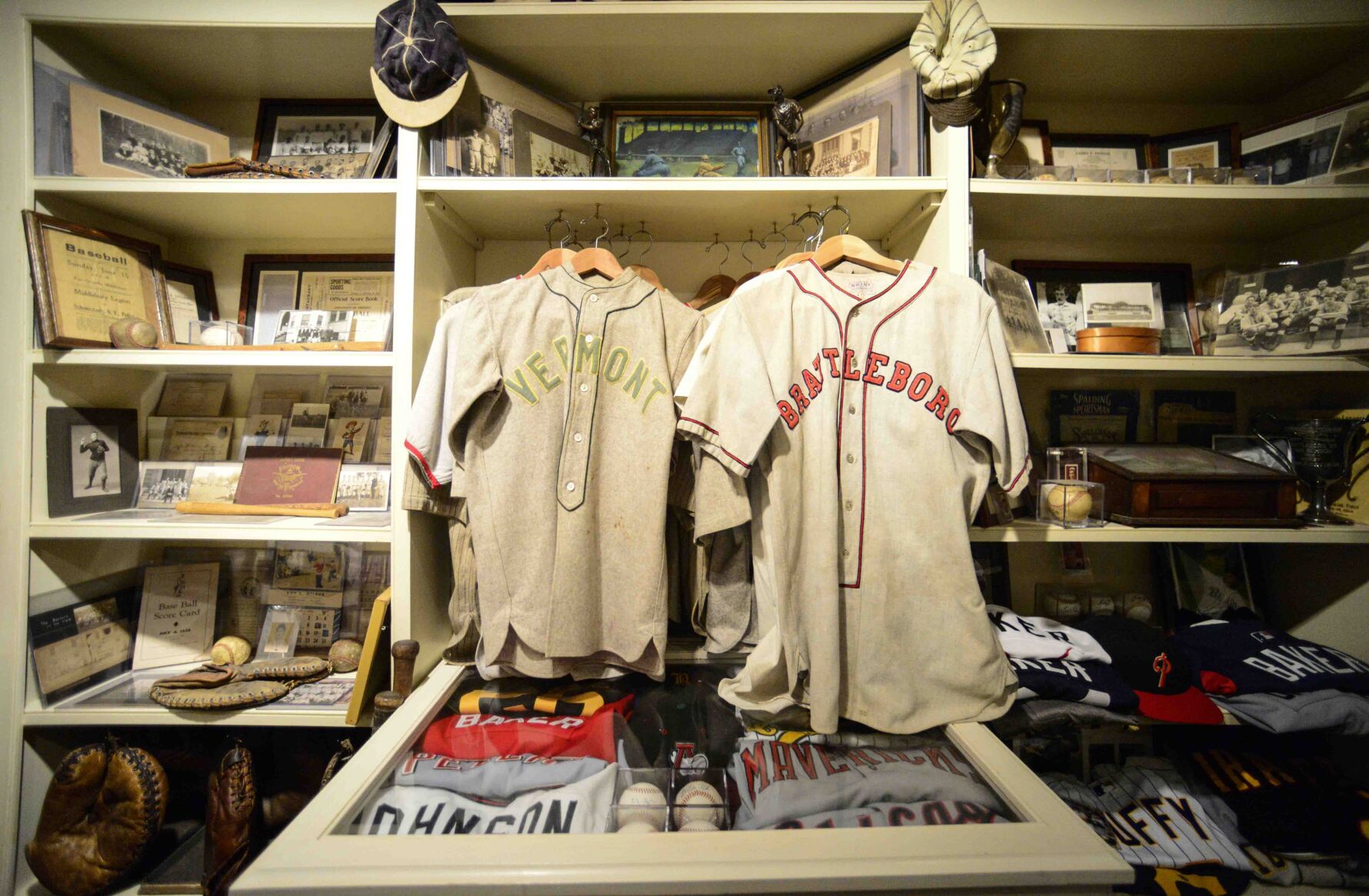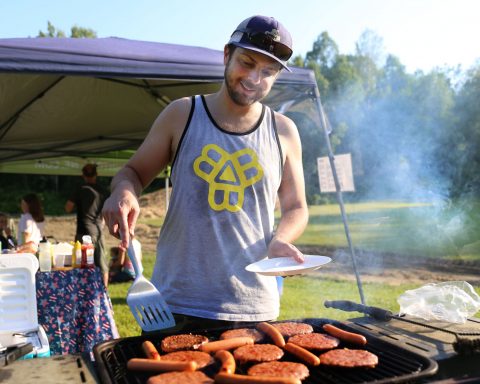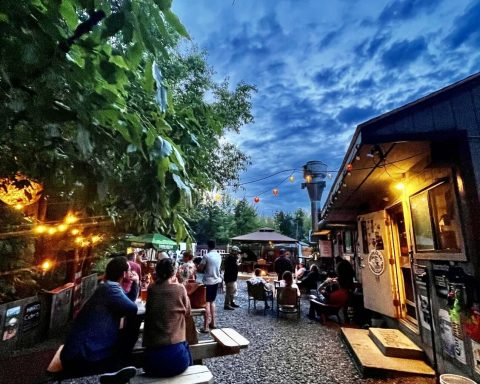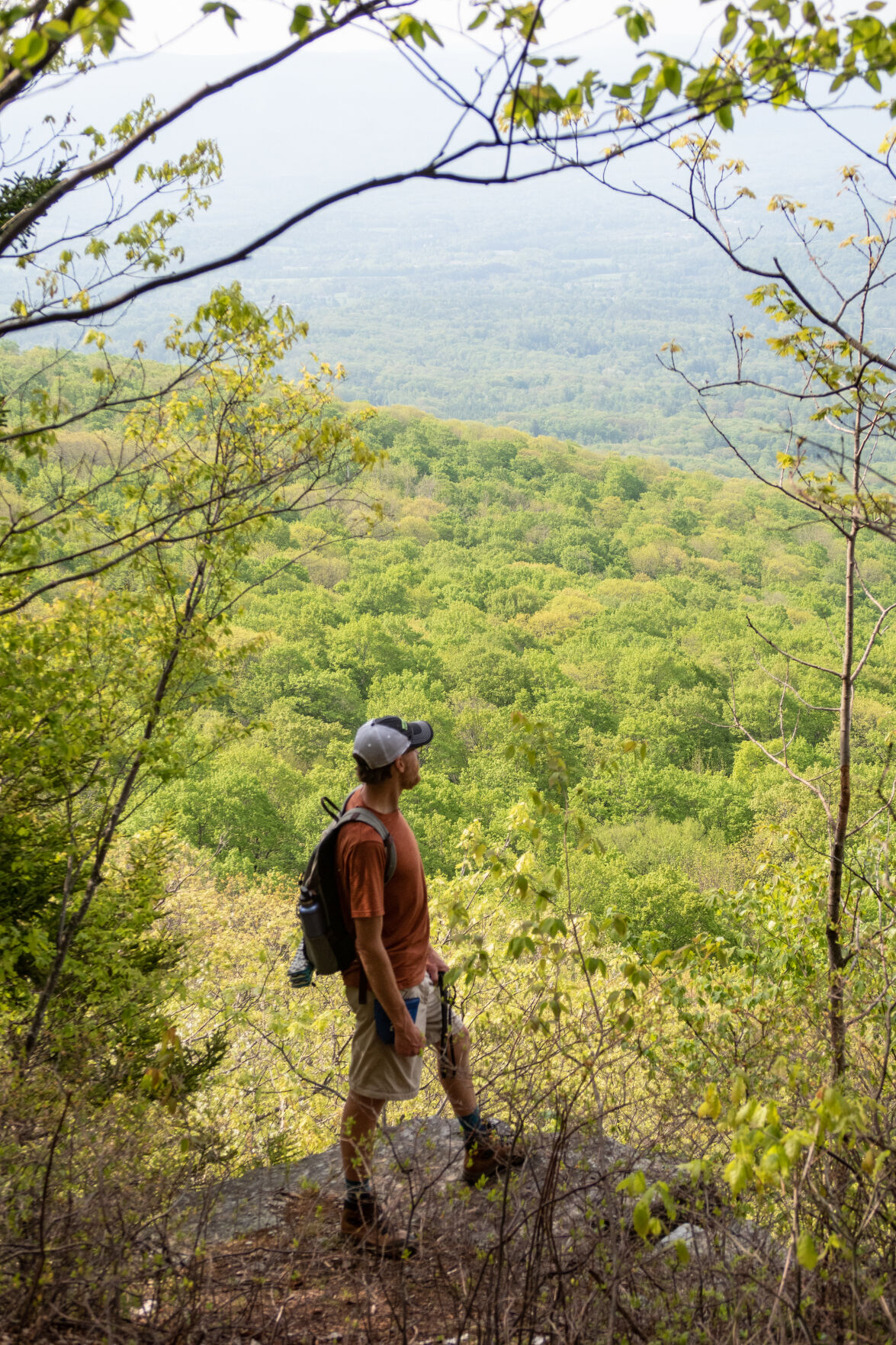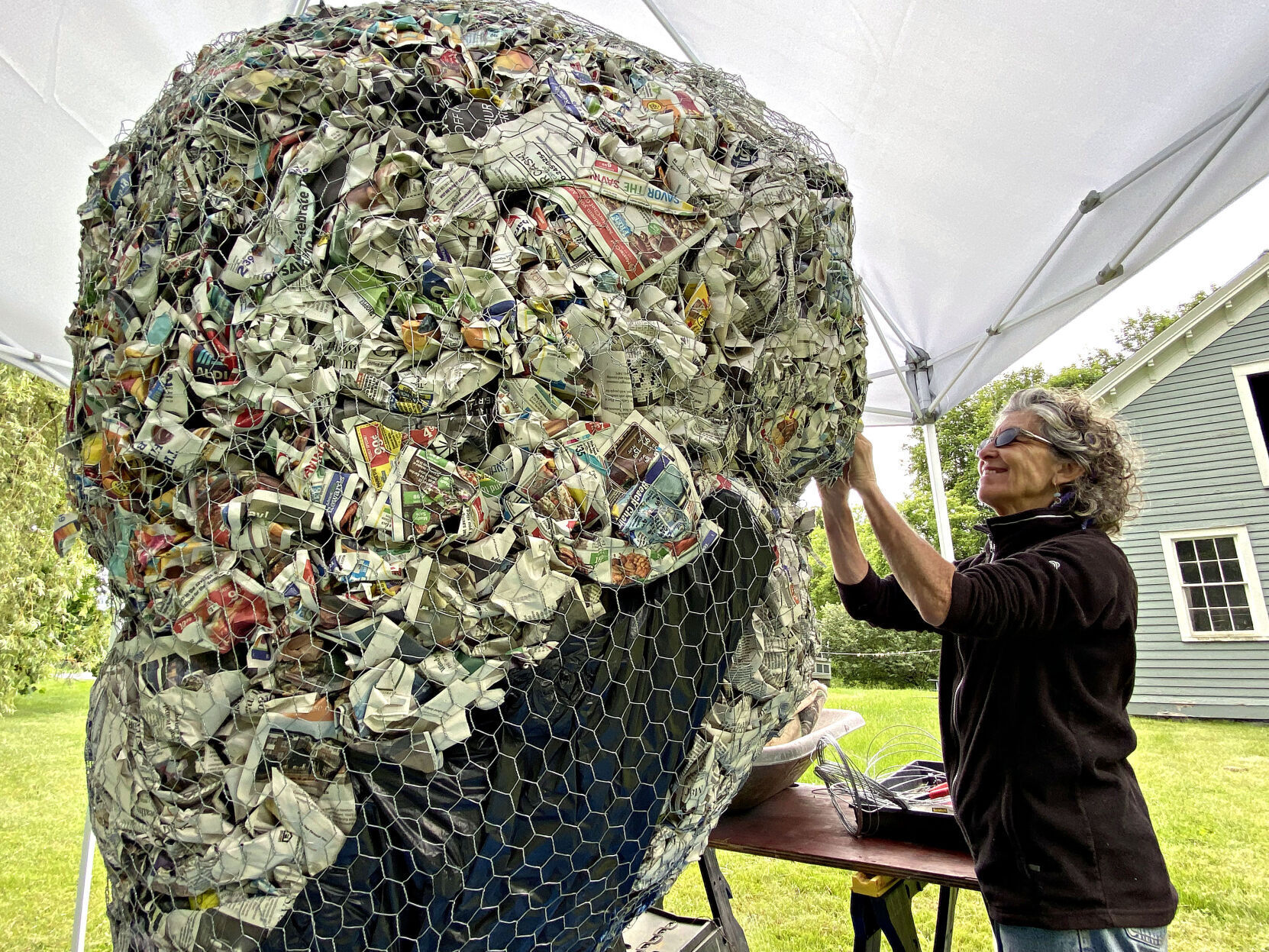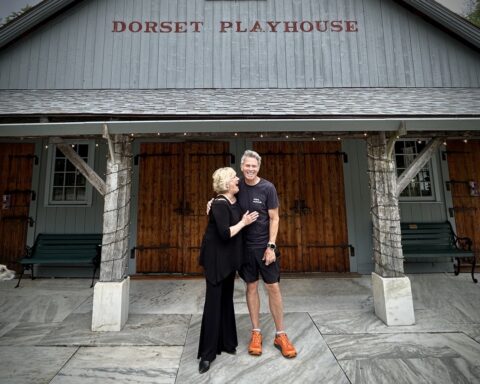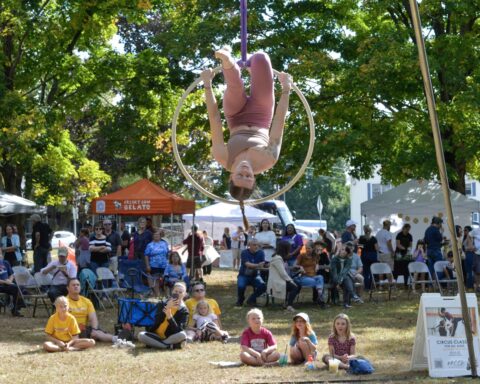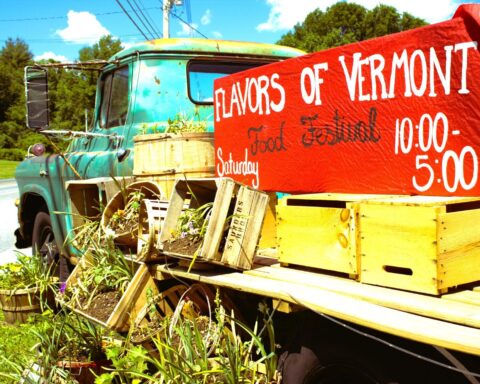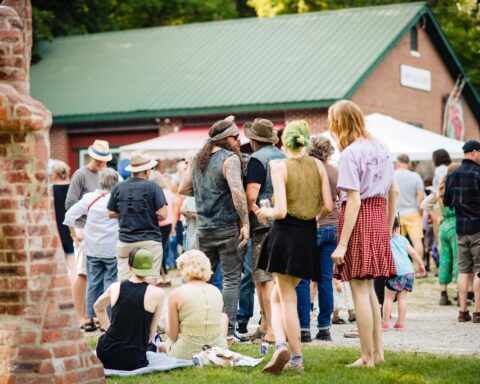Written by Bill LeConey, Vermont Country
BRATTLEBORO — Springtime in Vermont can be a cruel tease of false hopes and delayed promises. Chilly nights give way to warm afternoons, which produce melting snow and windswept, muddy fields — not very conducive to outdoor sports such as baseball.
But, somehow, America’s pastime has — if not thrived, at least survived — in Southern Vermont and the Brattleboro area, to produce distinctive ballplayers and unique moments that are remembered fondly today. Much like Vermonters, in general, the sport has persevered with stoic dignity in the face of tough conditions, numerous doubters, “curveballs” and adversities.
Dana Sprague’s home in Brattleboro is a testament to the colorful history of baseball in the area. Sprague, a Brattleboro Union High School graduate who played for the Colonels when they won the 1978 state baseball championship, has one of the largest private collections of Vermont baseball artifacts in existence.
“I’ll preface this by saying that I know about 1 percent of what there is for history about baseball and Brattleboro,” Sprague said. “There’s so much history that goes back to the 1860s.”
He sells himself short. Much of what we know about the people and places that make up the history of baseball in this region are the result of Sprague’s curiosity, research, and a devoted interest in the game bordering on fanaticism.
Brattleboro’s baseball history includes names such as Ernie Johnson, Dave “Boo” Ferriss, Frankie Taylor, John Henry Williams and Chris Duffy. Expanding farther afield, you have the likes of New Hampshire’s Carlton “Pudge” Fisk, who was born in Bellows Falls and starred for an American Legion team there before embarking on a Hall of Fame career with the Boston Red Sox and Chicago White Sox. There was Chuck “The Rifleman” Connors, who played for a semi-pro team in Bennington before becoming a star on TV and movie screens. And there was Franklin Olin from Woodford, who starred at Cornell and played in early professional leagues in the 1880s before becoming a millionaire industrialist and philanthropist.
Southern Vermonters played ball in venues such as Island Park, a spit of land on the Connecticut River between Vermont and New Hampshire, and they plied their craft in reputable circuits like the Northern and West River Valley leagues.
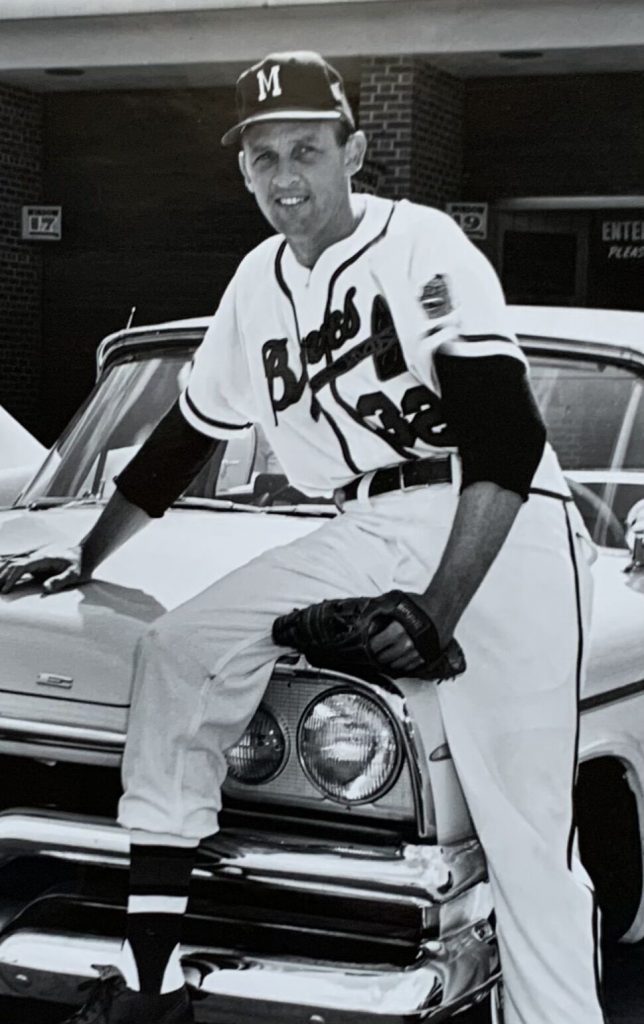
Even the most basic element of the game — its baseballs — were once stitched together in a Brattleboro factory.
“Back in the late 1800s, early 1900s, Brattleboro was kind of a tourist town,” Sprague says. “They promoted the river, the mountain … Having a team in the Northern League helped, and Island Park. In the 1800s, with Brattleboro being a really great business town, there were a bunch of town teams, and they had good players.”
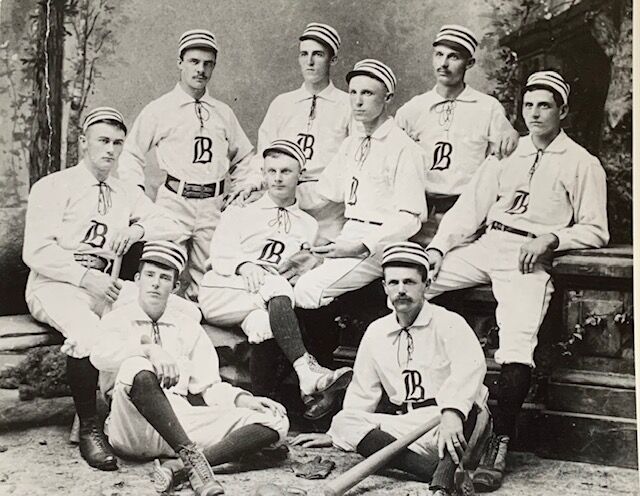
Brattleboro even has a connection to one of the earliest depictions of the game, by William Morris Hunt, a famous Boston portrait and landscape artist who was born and spent part of his childhood in the Southern Vermont town. His “The Ball Players,” c. 1871, showing three men playing baseball on a rough field, was painted in the year that the first professional league was established.
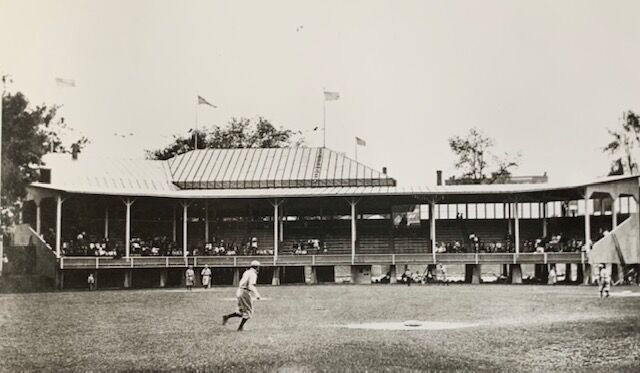
The Island game
Island Park, the entertainment complex that sat between Hinsdale, N.H. and Brattleboro, was the epicenter of baseball in Brattleboro in the 1910s and 1920s. The Park drew huge crowds for ball games, pageants, political speeches (President William Howard Taft spoke there in 1912), dances and other events.
“As time went on, (baseball) got so popular in Brattleboro they had what were called town teams, which is a lot like the softball leagues nowadays in Brattleboro,” Sprague said. “And it’d be four to six teams with the best baseball players in town and they’d be sponsored by businesses such as Estey Organ, the Vermont Wheel Club, that sort of thing. All the towns in the area had teams, and they got really popular from about 1900 into the ’30s.
“Any team that had a train ticket to Brattleboro found their way to Island Park,” said Sprague. “Few of the guys who played there were locals, they were all recruited, ‘ringers,’ that sort of thing. Officially, none of these guys got paid to play but there’s a lot of talk of these guys getting paid under the table, small amounts. My guess is some of the best players didn’t get paid at all.”
Sprague said that one game, between Keene, N.H., and Brattleboro for the league championship, drew a crowd of 3,200 people.
It didn’t last long, however. The construction of the Vernon Dam led to a series of spring floods that eroded Island Park. The devastating flood of 1927 was the final straw, washing away most of the buildings and the pavilion.
One of the men that played at Island Park was Brattleboro native John Foley, who was born in 1857 and grew up on Frost Street. Foley played on a team sponsored by the Estey Organ Company, established himself as one of the best pitchers in New England, and later made his professional debut for a team in Quincy, Illinois.
In 1885, Foley became the first Brattleborian to appear in a major league game, starting for the slumping Providence (R.I.) Grays in a National League game in St. Louis. He failed to stop the team’s bleeding, as the Grays lost, 7-3. He never played in another game.
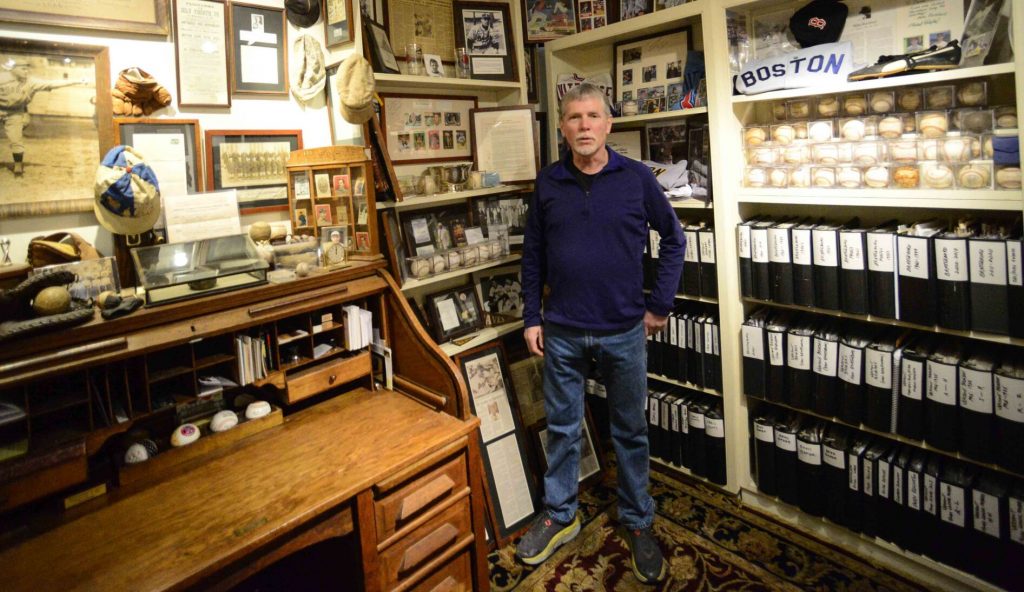
The Northern League
After the demise of Island Park, the baseball action shifted to a sports complex constructed on the old fairgrounds on the south end of town with the help of the Works Progress Administration. Completed in 1940, Stolte Memorial Field — named for Diedrich “Dede” Stolte, a longtime coach and physical education instructor at Brattleboro High School — hosted all levels of baseball for the next eight decades, beginning with the Northern League in the 1940s.
The Northern League was a semi-pro baseball circuit, made up of mainly college players, that included teams from eight towns: Brattleboro, Bennington, Rutland, St. Johnsbury, Montpelier, Burlington, St. Albans and Keene, N.H.
Many players in the Northern League had hopes of making it to the big leagues, and some of them did. Some were college players looking to earn a few dollars during the summer months, or journeymen who had already played for major league farm teams. Players would sometimes use false names in an effort to protect their amateur status.
With the new sports complex, Brattleboro had one of the best facilities in the state. The Brattleboro Maples joined the Northern League in 1940, and won the league championship in 1949. “That was the heyday for baseball in Brattleboro,” said Sprague.
Organizations in town would raise money to pay a manager and players to represent the town. The league salary cap for players was about $200 a month and most players received less than that. During the pennant winning season, it cost 60 cents for an adult to attend a game.
With the Maples in town, the community had a connection with the big leagues. In 1948, three former Maples players, Dave “Boo” Ferriss, Chuck Stobbs and Les Layton, began the baseball season in the majors. Ferriss served in the Air Force from 1942-1945 and joined the Red Sox to start the 1945 season. He made an early splash, pitching a five-hit shutout against the Athletics and setting an American League record for scoreless innings pitched at the start of a career with 22, a record which stood until 2008. He pitched in the majors for six years and the Brattleboro Reformer closely followed his career.
Sprague said 62 future major leaguers spent some time in the Northern League, including notable players Robin Roberts, Johnny Antonelli, Vic Raschi, Jim Konstanty and Johnny Podres.
The Maples disbanded after the 1950 season. The rise of television and rules changes, which prevented college players from participating in semipro leagues, contributed to the demise of the Northern League.
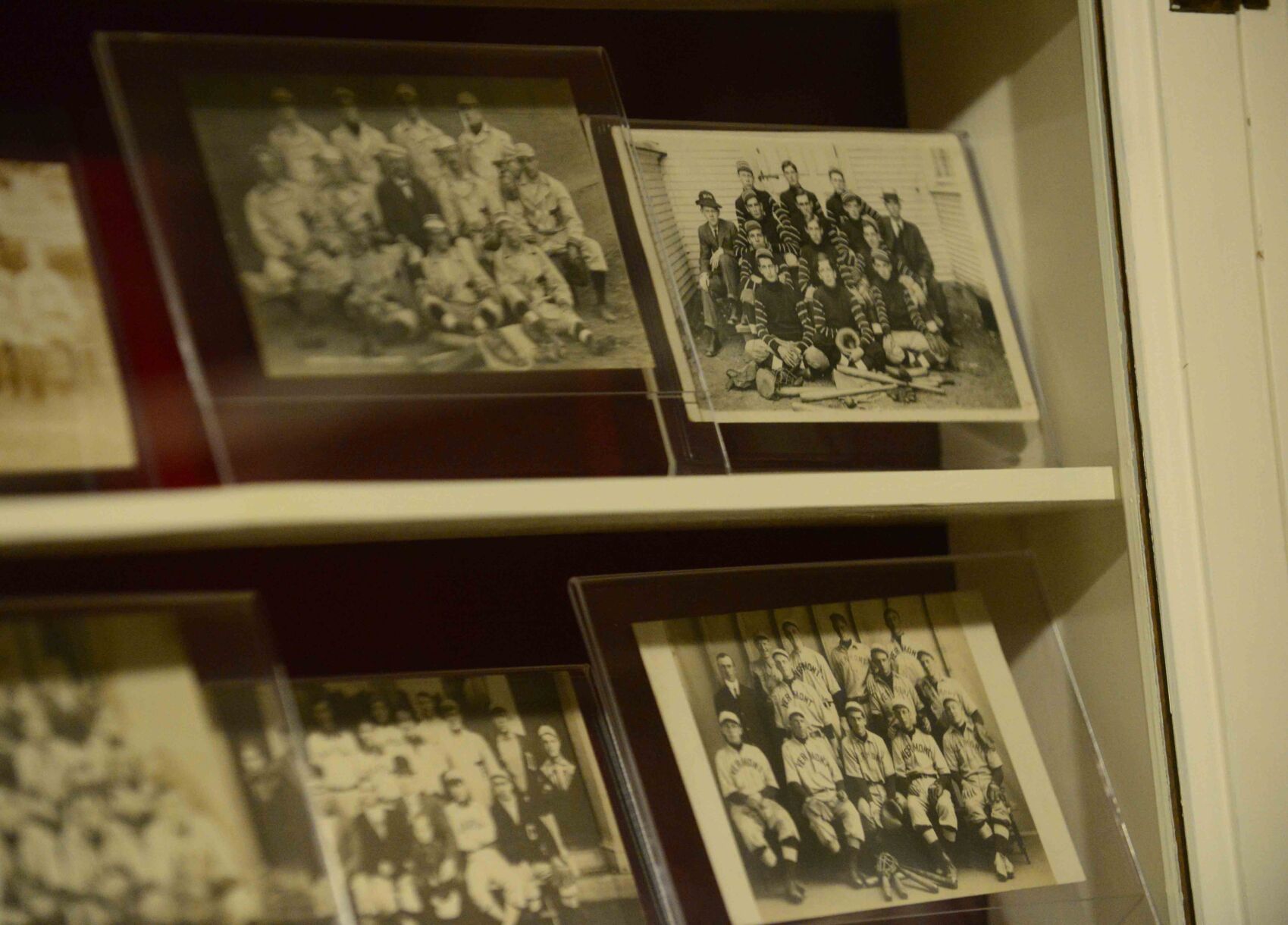
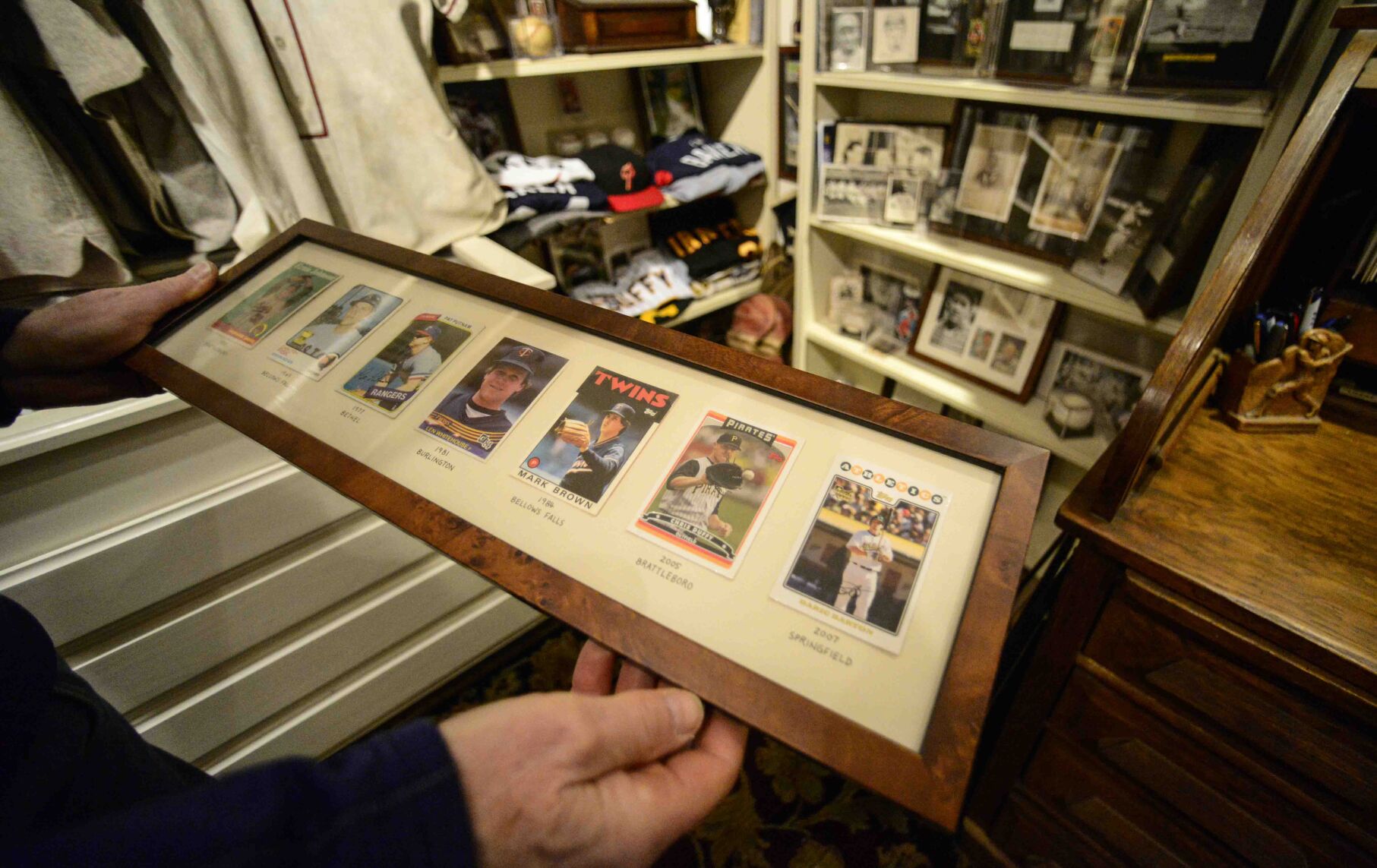
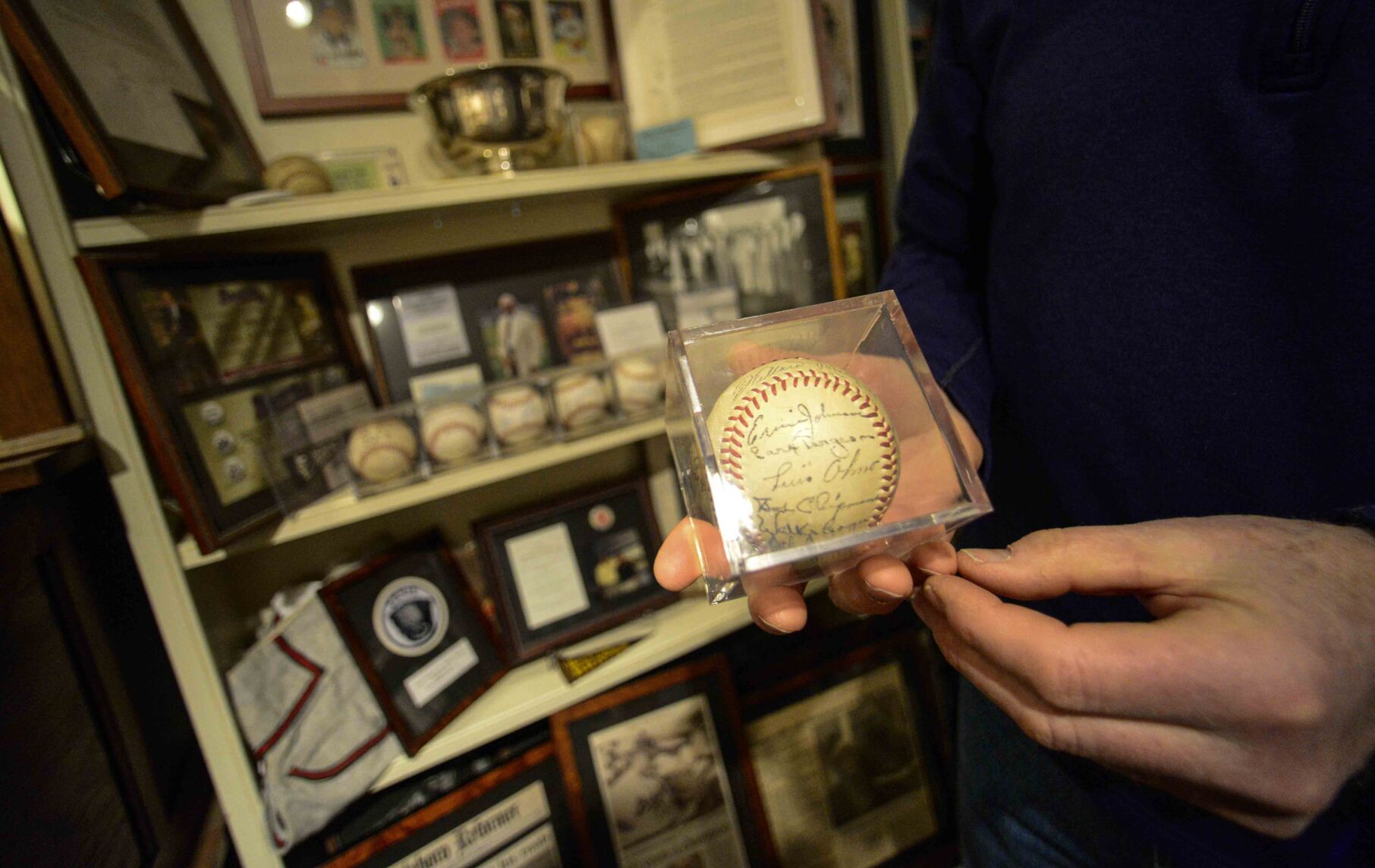
Making ‘The Show’
According to Sprague’s research, nine Brattleboro natives have played professional baseball, including John Henry Williams, son of Red Sox legend Ted Williams, who was born in Brattleboro and grew up in Putney. Chris Duffy, who played for the Pittsburgh Pirates and Milwaukee Brewers from 2005-2009, is the last to make “the show” as of today.
None accomplished more or did more to strengthen Brattleboro’s baseball connections than Ernie Johnson. An excellent pitcher at Brattleboro High School in the late 1930s and early 1940s, Johnson went on to a solid nine-year career in the major leagues with the Boston and then Milwaukee Braves, helping the Braves win the 1957 World Championship.
He retired with a lifetime record of 40-23 and an ERA of 3.77 in 273 games. “Maybe not the stuff of Cooperstown,” remembered former teammate and Hall of Famer Eddie Mathews, according to Sprague, “but damn it, the man could pitch.”
After his playing career ended, Johnson became a legendary broadcaster, calling Braves games on radio and television for 35 seasons. His 52-year association with the Braves was the longest of any person in the organization, and he is one of only three (along with Mathews and Hank Aaron) to move with the team from Boston to Milwaukee to Atlanta.
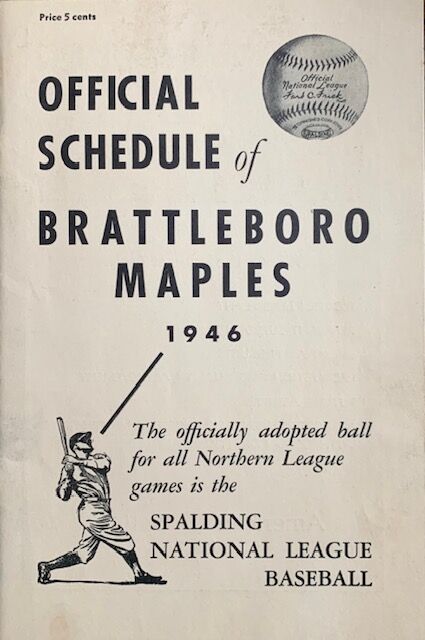
“We got together every year for like 20 years,” said Sprague, who became a close friend of Johnson and his family. “He always called Brattleboro his hometown, even though he was gone after the age of 20. But he always came back. I think a light went on with some of these players who (previously) thought there’s no way someone from this area’s ever going to make it to the majors. And it was like, ‘You know what? Sometimes there’s people good enough to do that.'”
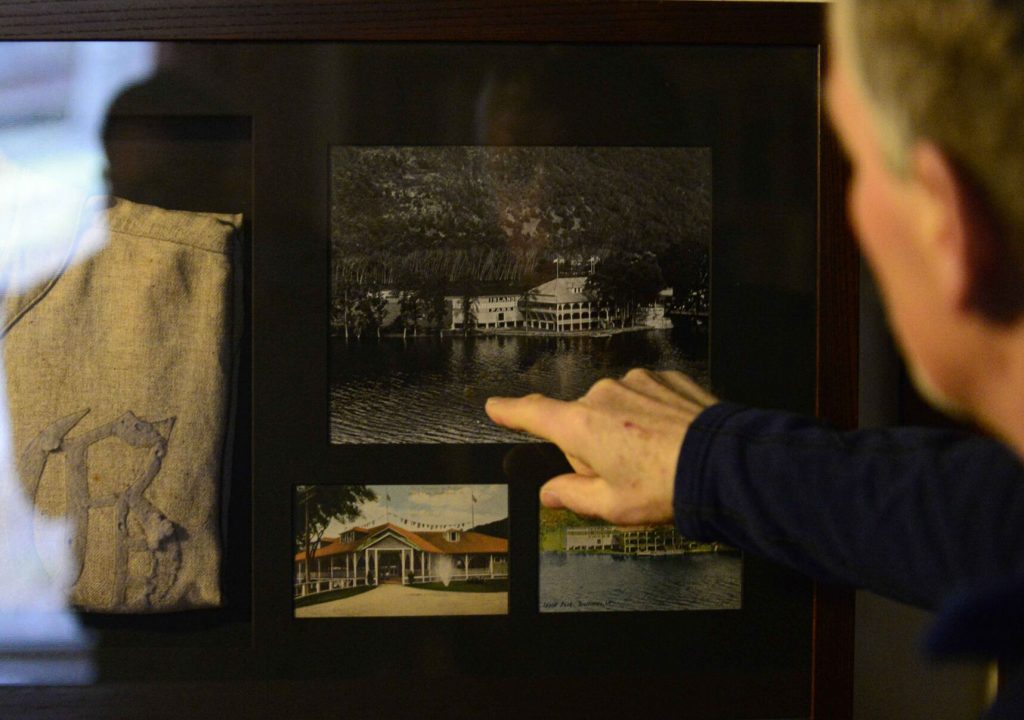
Stitches and seats
Perhaps the best player to emerge from Brattleboro was Frankie Taylor, who graduated from its high school in 1937 and went on to play four varsity sports at the University of Vermont. Instead of playing professional baseball, he served in the Navy during World War II and became an engineer and high school coach in Massachusetts.
He may not have known it at the time, but the baseballs Taylor threw or batted were likely stitched together right around the corner, on Birge Street, by the Spalding Company. In 1943, the company moved the majority of its baseball sewing operation from Canada to Brattleboro. About 70 percent of all professional league baseballs had their horse-hide covers sewn together in town.
By 1946, more than one million baseballs had been assembled in Brattleboro. That same year, the wooden grandstand at Stolte Field burned down. A concrete and steel grandstand — the one that still stands today, at what is now called Tenney Field — was built as its replacement. That grandstand has been closed to spectators since 2017, in need of repairs to modernize its seating and make it handicapped accessible.
Retired Brattleboro teacher and local historian Bill Holiday said there is an effort underway to replace the current bleachers with “hand-me-down” stadium seats from Fenway Park in Boston. If it happens, it would be one final, lasting connection between Brattleboro and the big leagues — at least until the next local star makes “the show.”
Bill LeConey is night news editor of the Brattleboro Reformer, Bennington Banner and Manchester Journal. A longtime sports reporter and editor in Atlantic City, N.J., he enjoys good music, good food and good drink. He was also once the frontman for a marginally successful psychedelic punk grunge band.
